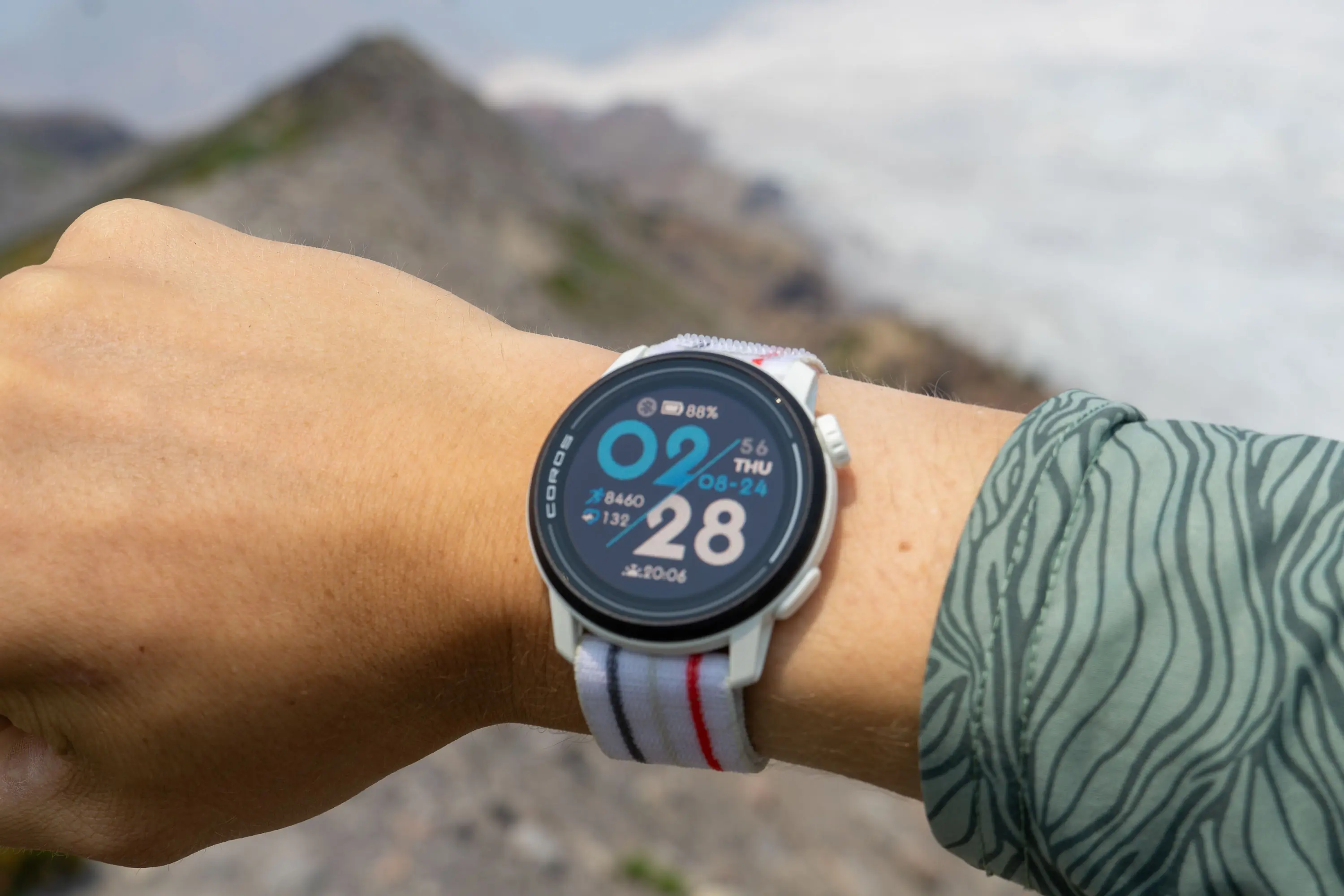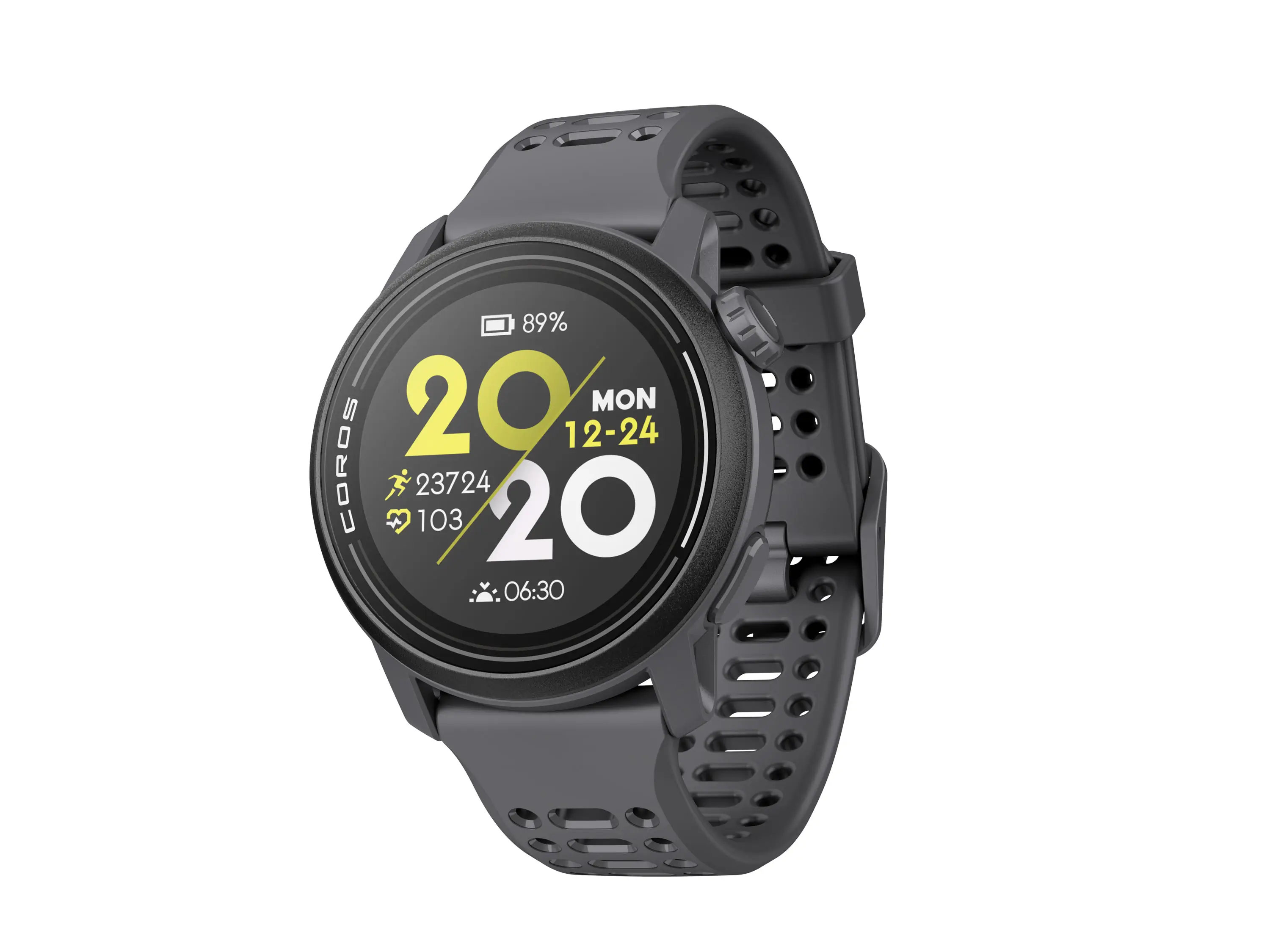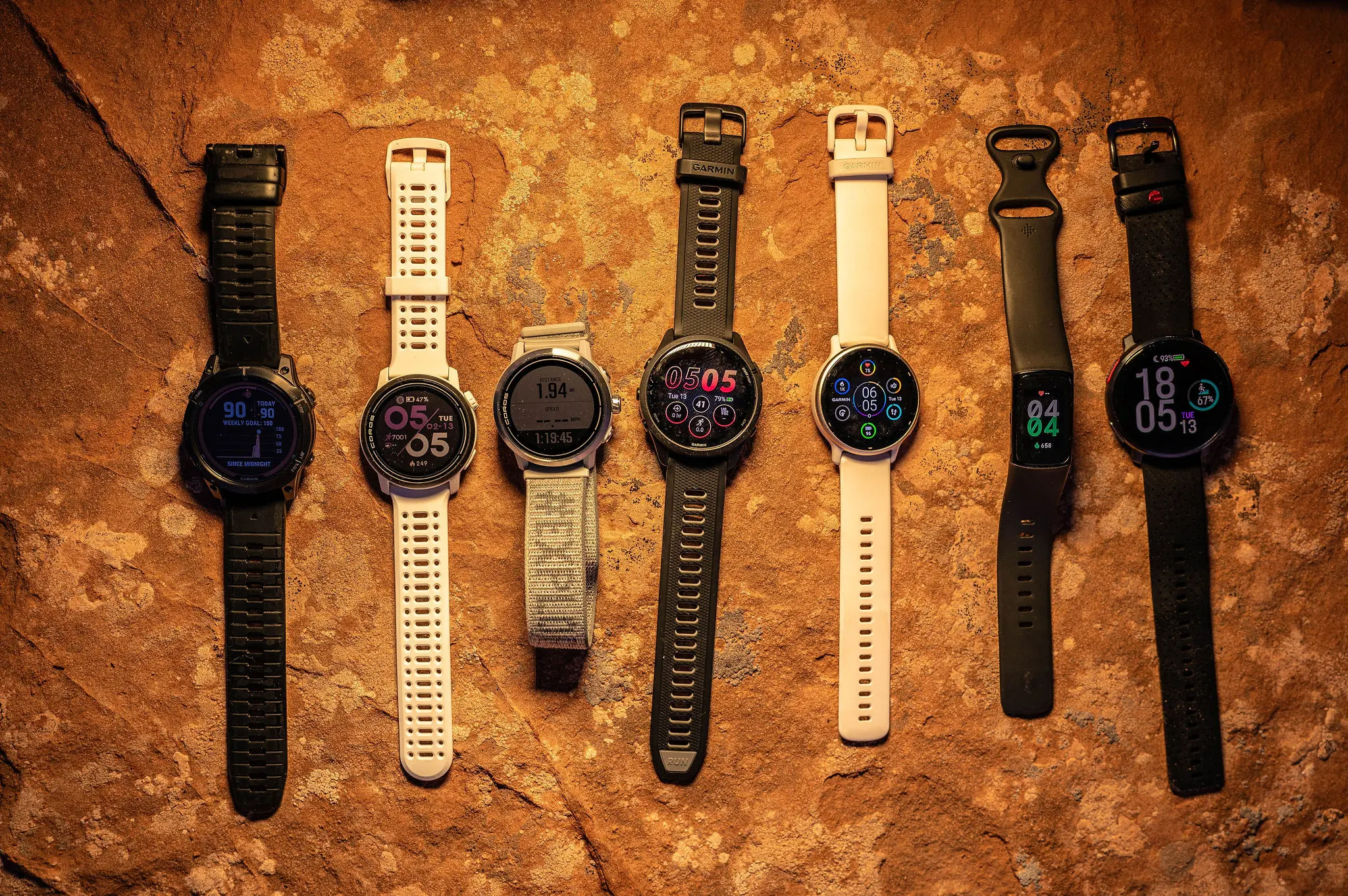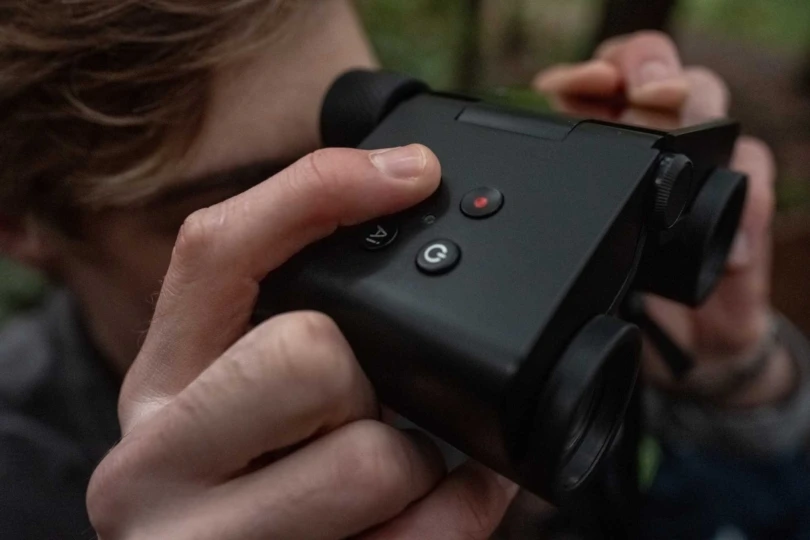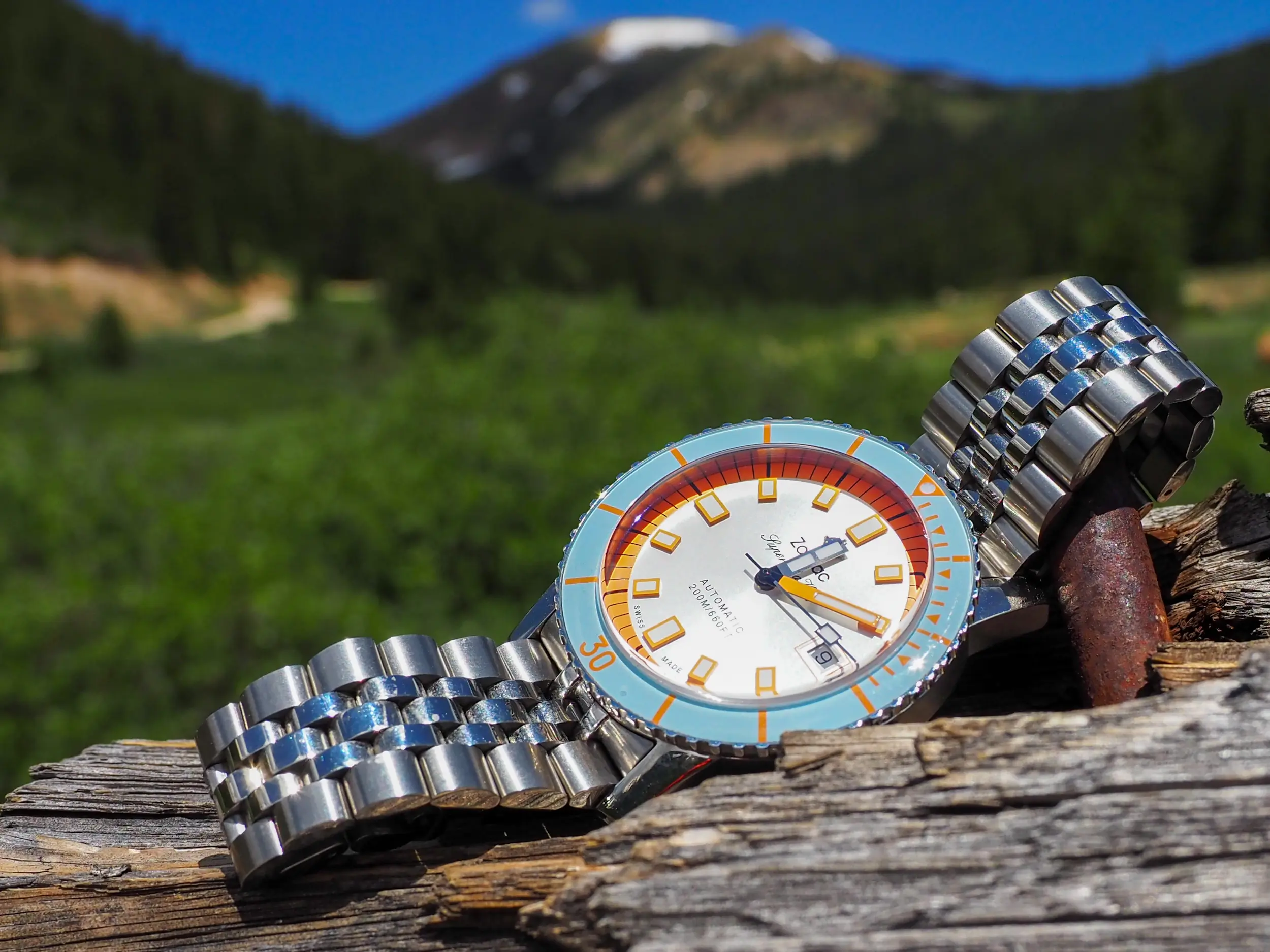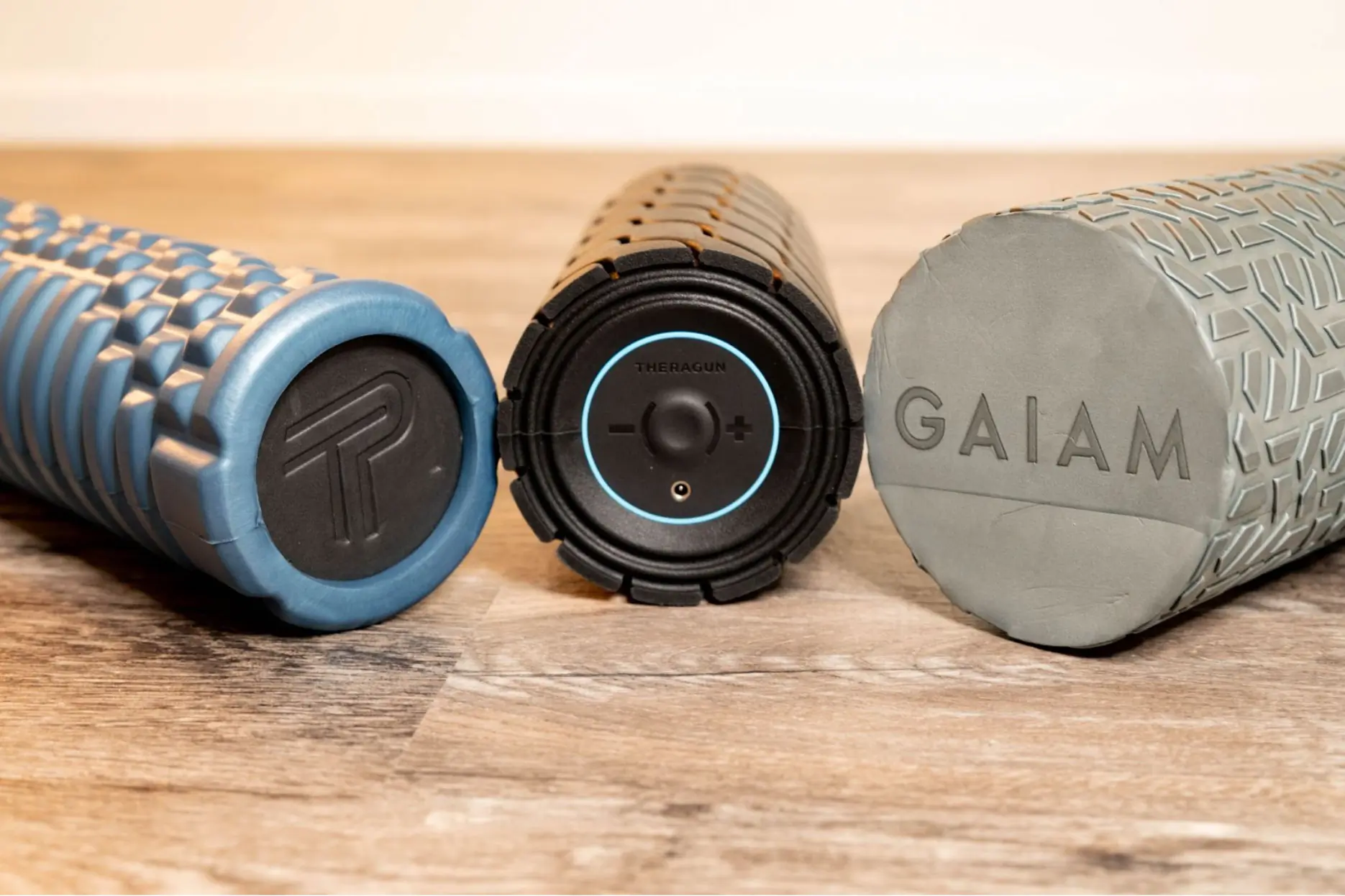I’m spoiled. Spoiled rotten, really. It’s easy when fitness watches are just so good. Near-infinite battery life is on the horizon. On-device mapping rivals our phones. And folks throw bombproof around casually as a descriptive term. I never even used to be a watch guy, but these days, it seems like I’ve always got some piece of tech hoovering up data on my wrist.
And with these high-gloss options, it’s easy to become jaded about what is really necessary for a watch, and just as easy to slap on the latest and greatest by default. But the new COROS Pace 3 — available at a downright reasonable $229 and saddled with much of the hallmark tech of high-end watches — stands poised to, well, really throw a wrench in the works.
The latest revision to the classic Pace series, which launches today, is bound to make waves among those angling for a high-end experience without the high-roller ding to the wallet. Building on the shoulders of the already popular Pace 2, the new Pace 3 piles on the features to take you further, longer, and more accurately there.
In short: The COROS Pace series already has a well-worn groove in the sports watch market. The introduction of the Pace 3 solidifies its space. With newly added mapping abilities, dual-frequency satellite reception, enhanced battery life, and somehow a smaller profile, this is one watch that punches well above its weight class. And at a sub-$250 price, it doesn’t look to be going anywhere soon.
To learn more about the Pace 3 and how it fits into the larger fitness watch world, check out GearJunkie’s full guide to the Best Fitness Watches.
-
Activity Tracking and Accuracy
7.0
-
Battery Life
7.0
-
Training Data and Planning
6.0
-
Build Quality
6.0
- Size: 41.9 × 41.9 × 13 mm
- Weight: 30 g with nylon strap, 38 g with silicone band
- Battery: Lithium-ion
- Single-band GPS battery life: 38 hours
- Global Satellite Networks: GPS, GLONASS, Galileo, BeiDou, and QZSS reception
- Screen/Bezel: 1.2" Corning glass touchscreen and fiber-reinforced polymer
- Navigation Capable: Breadcrumb
- Barometric altimeter and compass: Yes
- Water Resistance: 5 ATM (50m)
Pros
- Extremely competitively priced
- Outstanding battery life for the price
- Dual-frequency GNSS reception
- On-device 4GB music storage
- Next-generation 5 LED heart rate monitor
Cons
- Less durable nylon polymer case and mineral glass
- Feels lightweight and less sturdy
- Lack of training and coaching insight compared to rivals
COROS Pace 3 Review
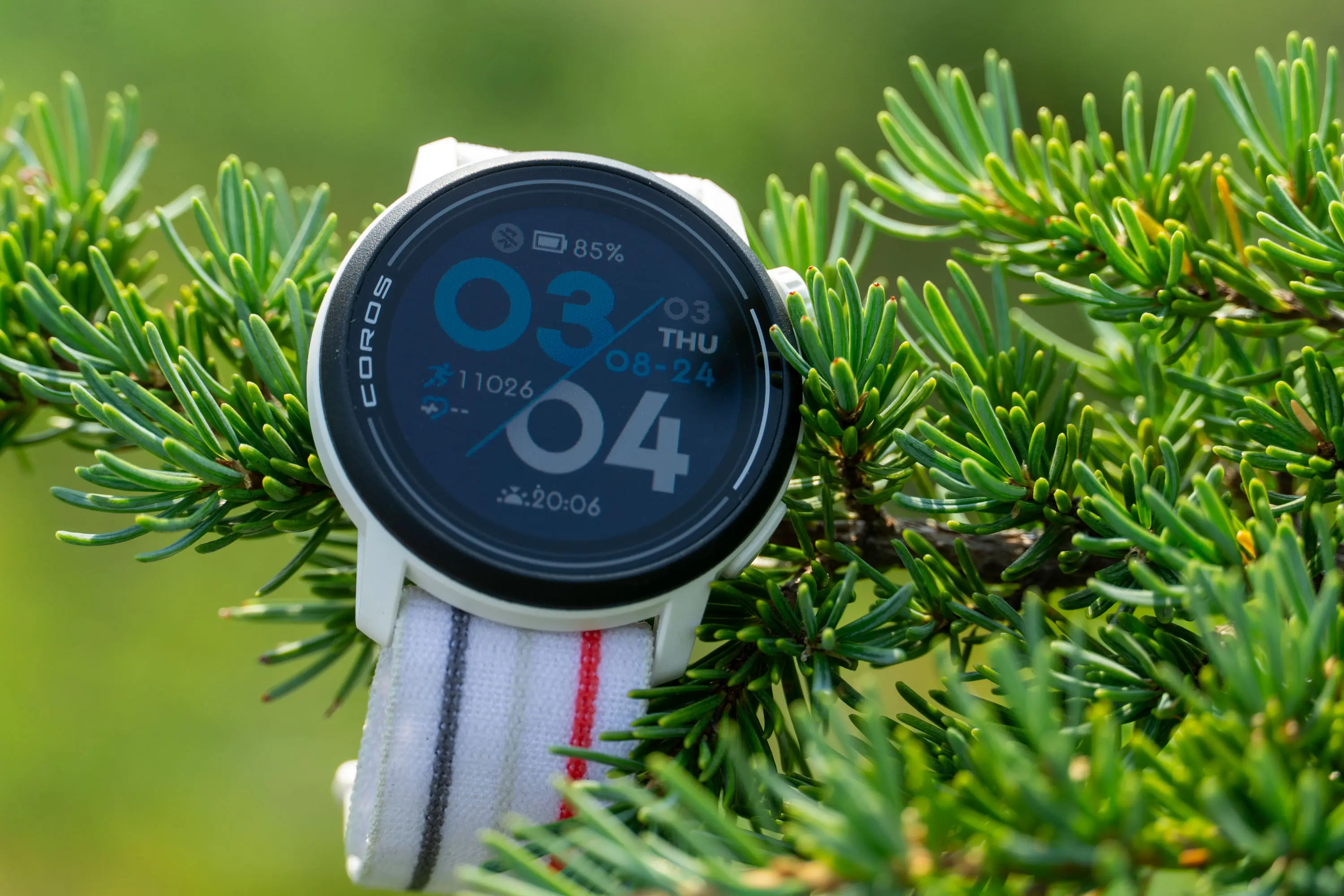
First, a few words on what exactly makes the new Pace 3 tick. The venerable Pace 2 ($200) has been high on our list of fitness watches for many moons, holding the Best Budget position with a bulldog tenacity — and thankfully, it seems COROS knows a good thing when it has one.
The new Pace 3 borrows heavily from its predecessor, and its DNA shows through in the very slightly tweaked bezel and case. It has similar nylon and silicone watch bands.
The new watch still comes in the classic black and white, with both of the watch bands being comfortable on the wrist. The watch itself takes up little wrist real estate, with a 1.2-inch touchscreen display and two buttons studding the side profile.
Under the hood, a newly added 4 GB of storage enables on-watch music playing, while a redesigned GNSS chipset adds dual-frequency GPS to really dial in location accuracy. An enlarged battery bumps up the battery life an additional 8 hours in GPS mode, and a more accurate heart rate monitor keeps its finger on the pulse. It all comes in at a penalty of just 1 additional gram over the previous model.
Arguably, the biggest news of all when it comes to the Pace 3 is the price. At only 30 extra bucks over the previous iteration, COROS obviously knows what makes the Pace series so attractive, and even with the high-tech updates, its decision to retain the low price had me excited to strap it on for a first look.
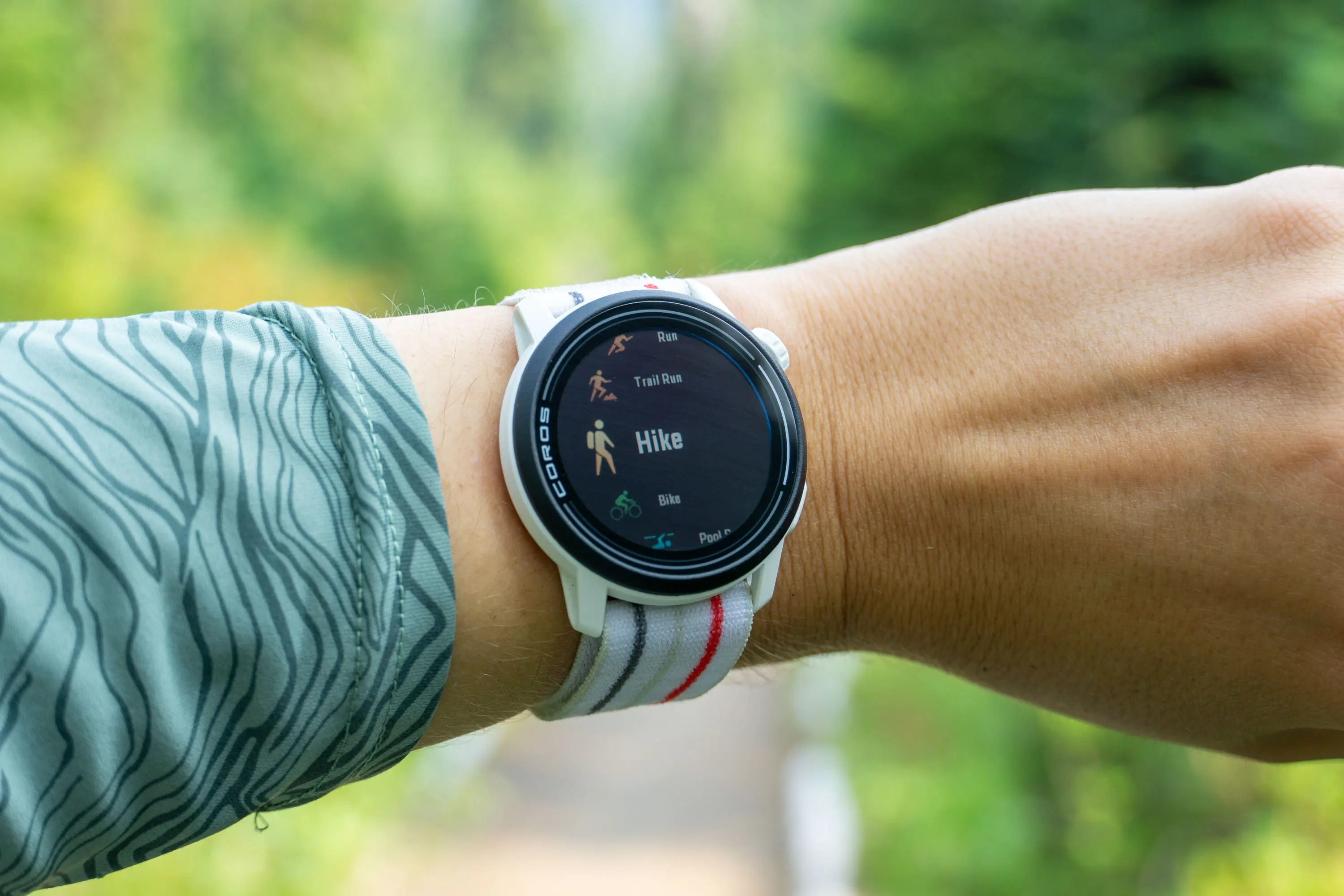



Tune In With Dual-Frequency Reception
It may be true that there’s nothing new under the sun, but with north of 7,000 active satellites orbiting the Earth currently, eking out additional navigation fidelity is going to require tapping into what we’ve already got in the sky overhead. This is exactly what dual-frequency technology is.
While the GPS constellation has been operational since 1993, later satellite launches with better tech have quickly sunsetted those birds. But dual-frequency tech leverages those older frequencies and makes use of multiple generations of satellites within the same system. It’s tech that has become commonplace in flagship fitness watches over the years, so its inclusion in the budget-minded Pace 3 is more than a surprise.
COROS touts the tech as being the game changer when it comes to running in places where GPS reception typically suffers, such as in dense cities like New York and Chicago. And, while I don’t have access to skyscrapers, I do have the next best thing: old-growth red cedars and douglas firs.




The thick Cascadian tangle that surrounds the apron of the volcano Kulshan is enough to make your head spin, and while there is a disturbing lack of hot dog carts, it would be my testbed for making sense of whether this dual-frequency stuff was gaining just inches or yards. Plus, the transition into the alpine would be a real test of ultimate fidelity when faced with an unobstructed skyline.
The evening before I queued up the COROS app on my phone and clacked out a quick route to follow, which the mapping functionality auto-snapped to existing trails. I made the high point at the toe of the Easton Glacier, and the next morning the Pace 3 was hot to trot with the map preloaded and ready to go.
Saddled down with three separate watches (the Pace 3, the Garmin Forerunner 265 — a very close competitor, and the Garmin Fenix 7 Pro — a top-of-the-line standard-bearer), I hit the trail and started grinding out vert toward the alpine. In order to test the abilities of dual-frequency reception, I had intentionally hobbled the Forerunner 265 by switching off its dual-frequency mode but had both the Pace and Fenix 7 at full tilt.
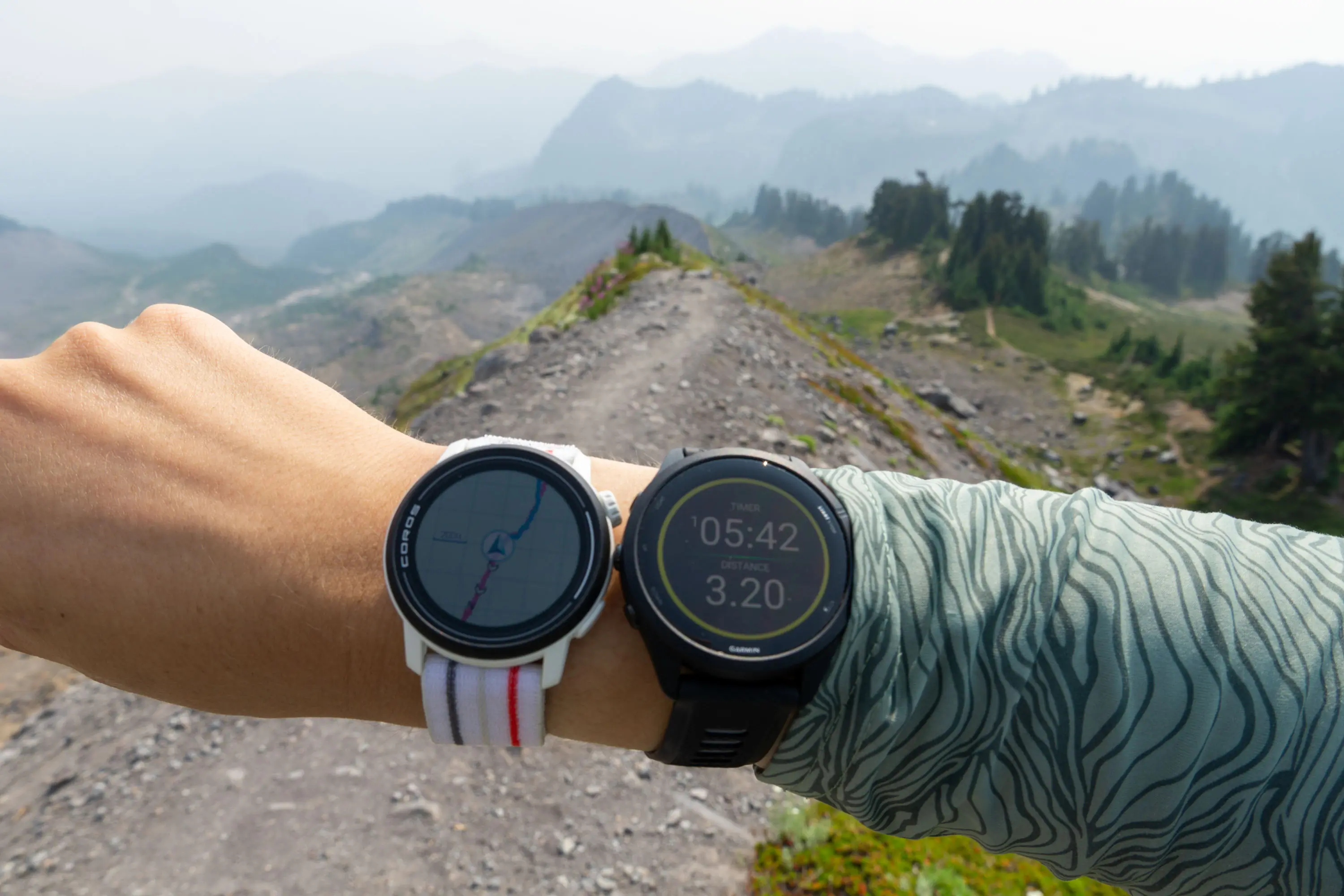



After a few miles, I entered the darkest hallways of old growth and hit a section of switchbacks — typically a struggle point for many sat watches. Here, I was surprised to see the Forerunner dropping out for a moment or two where the two dual-frequency-equipped watches steadily tracked on. This happened only a few times, but it was a dead giveaway of the importance of dual-frequency tech in maintaining connection when overhead visibility is limited.
Climbing higher into the alpine, the watches coalesced to a common track, and it was obvious just how good GPS watch technology has gotten in the last few years. All three tracks were on a rail as I kicked up the last few hundred feet to the edge of the glacier.
Here, the dual-frequency tech doesn’t seem to make much of a difference, and luckily you can decide which level of GNSS reception you want to dial up with every activity you set out on.




On-Device Mapping
On-watch mapping is technically not new to the Pace line, as the Pace 2 gained all of the breadcrumb navigation and in-app route-making that its mid- and top-tier cousins already had in a sweeping update in the spring of 2023. But carrying on this tech maintains the Pace 3’s place in the rare company of sub-$300 watches that offer the ability.
For planned activities, such as my trip up the mountain, using the COROS app to preplan your route can be a huge boon to knowing how far you’ve yet to go, how high there’s left to climb, and how close the après beverages are. The functionality is blisteringly simple compared to the limited capabilities of the previous app, with the new Explore tab opening up a world of route creation that’s as easy as tapping and dragging.
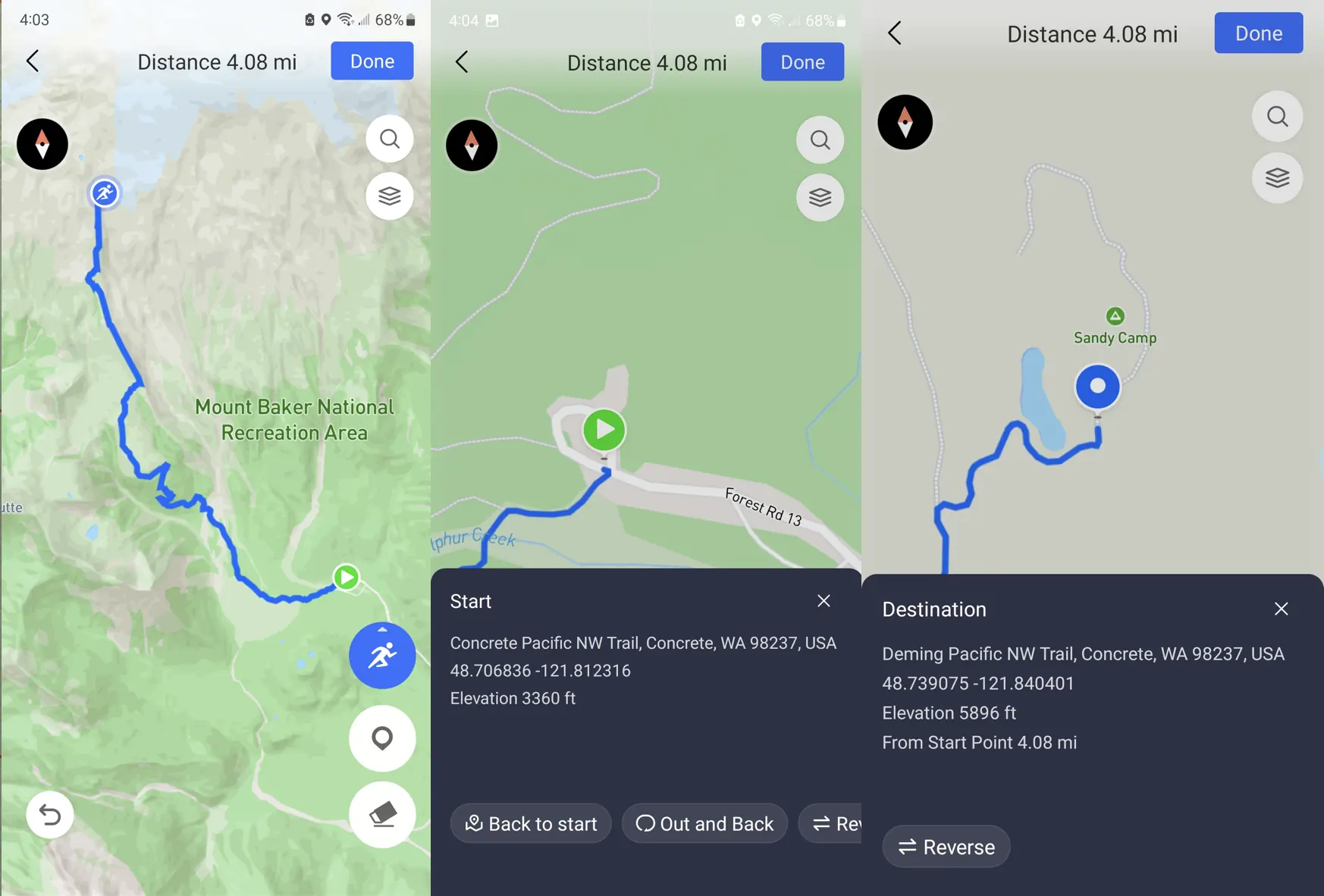



From here, routes can be shuttled over to the watch via Bluetooth, and new for the Pace 3 — Wi-Fi. In my own experience, uploading takes only a handful of seconds before your route is nestled into the watch and ready to go. The max number of routes is set at 30 (the same number the Apex and Vertix series can tote), which means some rotation will be required to keep things fresh.
During use, the map page is one of six you can toggle through. While simple, it gets the job done in conveying broad directions such as where a trail doubles back. The ability to zoom in and out is especially helpful, and multiple times during my trek I consulted the route to see how accurate it was. The watch even alerted me when I made an off-route turn to see a glacial waterfall.
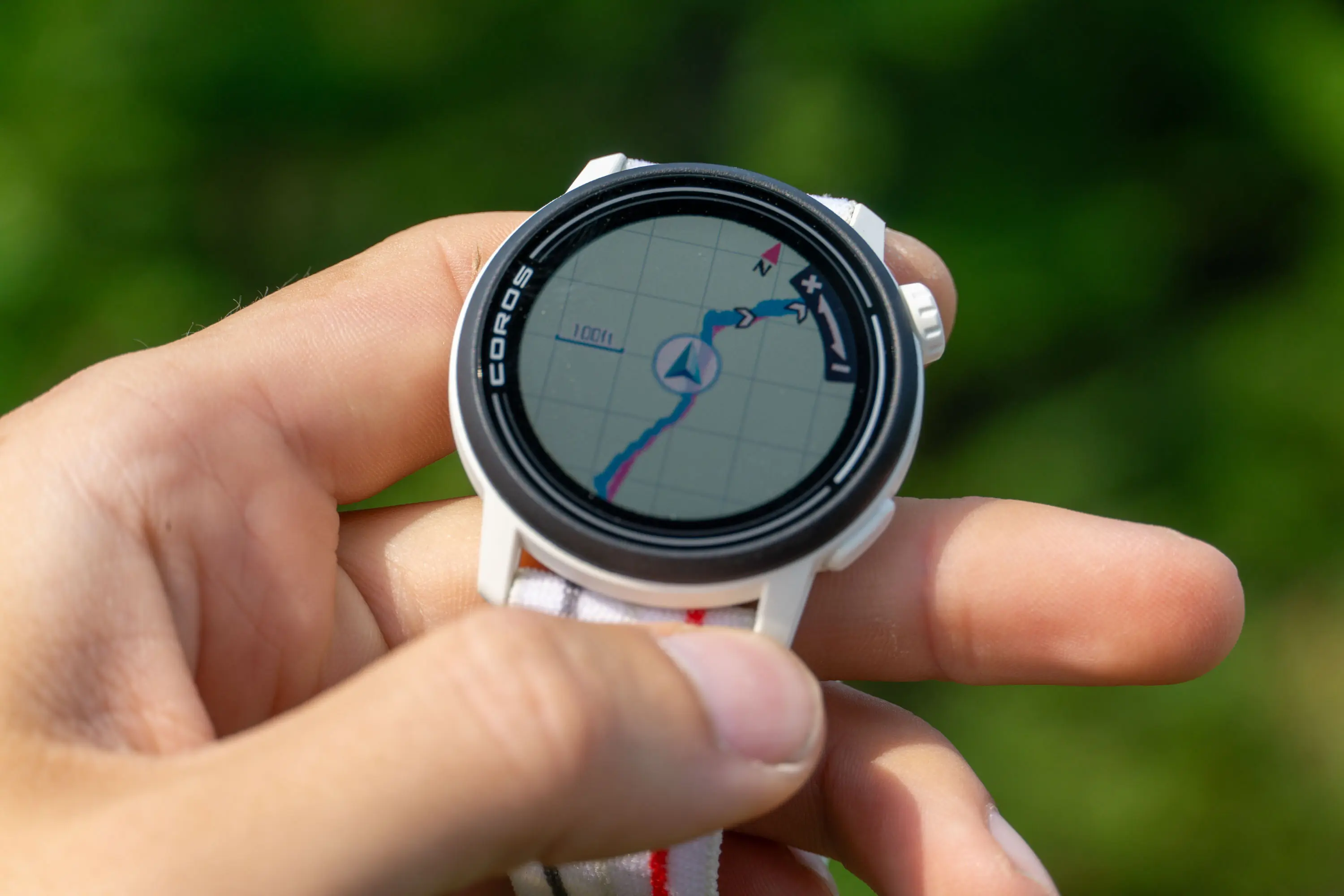



Smaller Watch, Longer Life
Don’t ask me how they did it, but yes: smaller profile, bigger battery. A bump up to a 236mAh cell over the previous 220mAh unit, to be exact. This translates to a real-world 8 additional hours of run time in the standard GPS mode. That’s like shoehorning in an entire additional day’s worth of activity tracking, which is no small feat.
When I started my test run of the Pace 3, the watch still showed a full 100% charge, even after it had been unplugged the night before. And the day after my testing, it showed a good 77% still, whereas the Forerunner 265 was running on fumes at nearly 30%. The Dual-Frequency setting is the most power-hungry of the lot, so it was impressive to see the Pace 3 sipping juice even in the most demanding mode.
The new battery also extends the legs of the day-to-day use mode, going from 20 days on the Pace 2 to 24 days on the Pace 3. The number is impressive considering the watch’s size, and it even beats out high-end timepieces like the Garmin Fenix 7 Pro, which only manages 18 days of casual use (22 with solar).
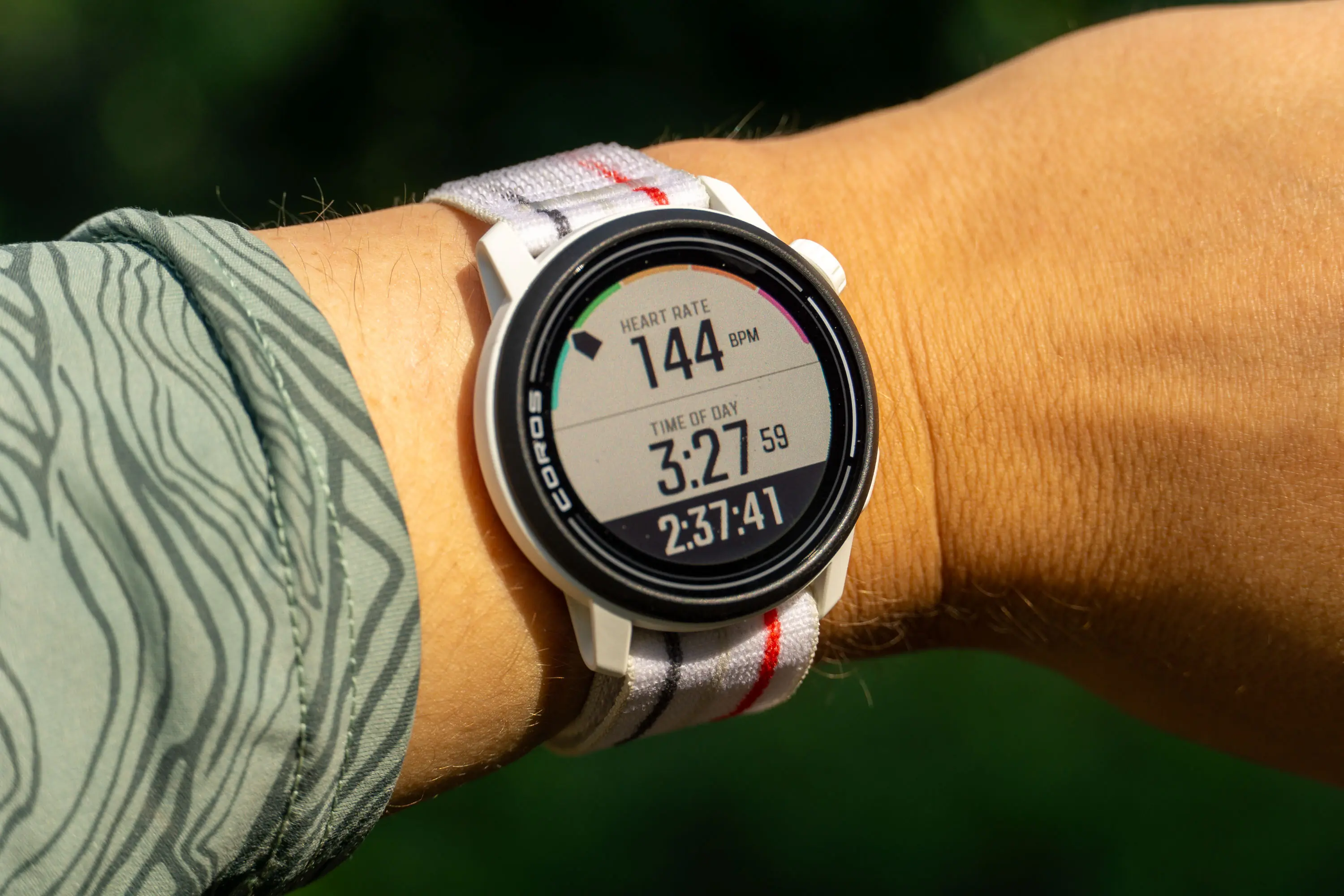



Next-Gen Heart Rate Monitor
While wrist-mounted heart rate monitors have never been the perfect solution, it certainly isn’t for lack of trying, and COROS really cranked the knob on its next-generation HR sensor in the Pace 3 — adding a five-LED/four-photodetector unit that puts it on par with the COROS Apex 2 (and ahead of the Forerunner 265).
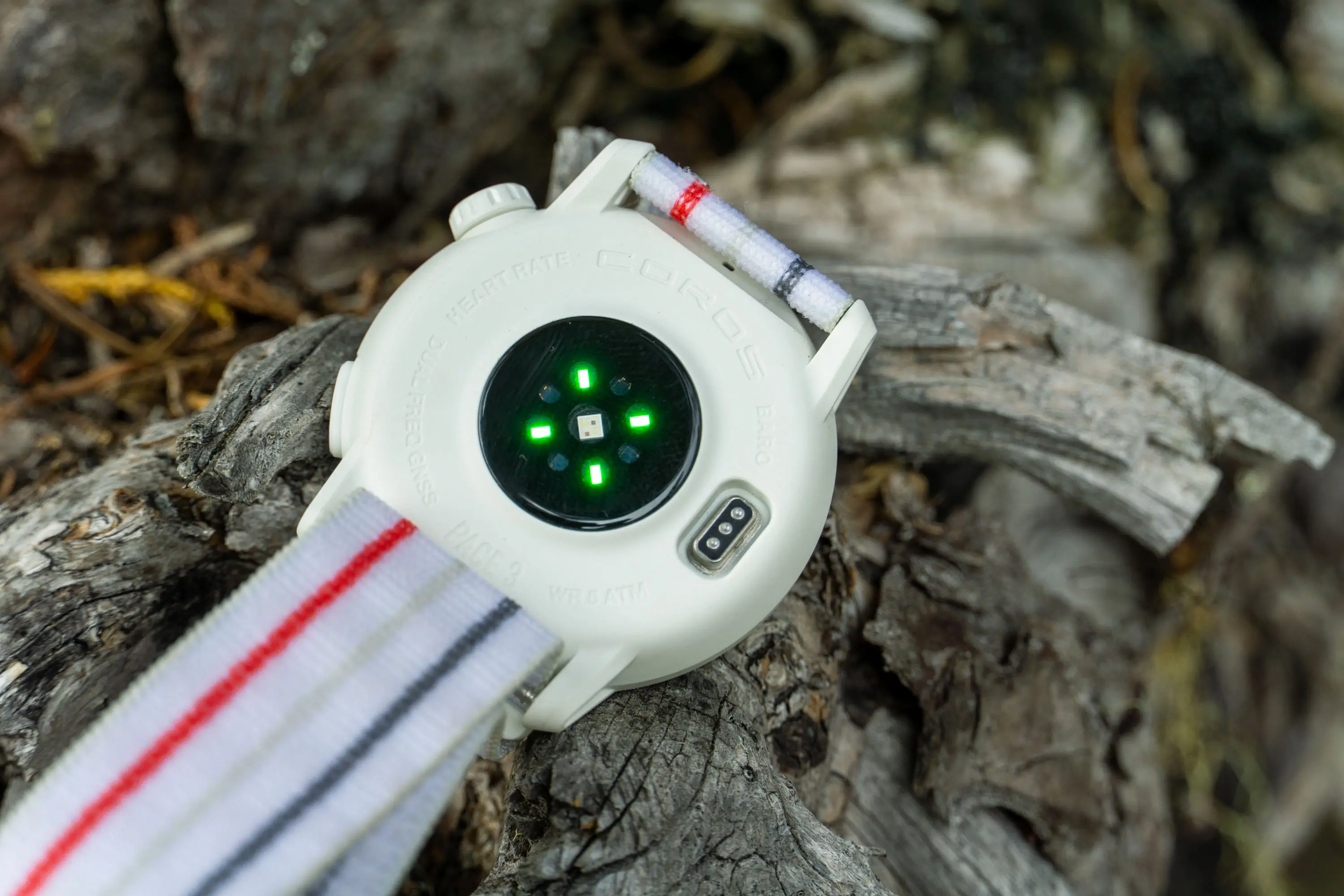



After my jaunt up Kulshan, it was enlightening to consult with the post-activity breakdown the COROS app offers and see where I was barreling through, and where I was dragging. The watch measured out a max heart rate of 201 bpm and an average of 159. It even broke down the numbers into lactate threshold zones: Aerobic endurance, aerobic power, threshold, anaerobic endurance, and anaerobic power.
While the updated HR sensor looks identical to the one employed on the Apex 2, the Pace 3 does not support a heart rate variability measurement, which can be used to roughly calculate your body’s stress level. The Pace 3 does, however, gain a pulse oximeter over the older version, which can be handy in high-altitude environs where O2 is in short supply.
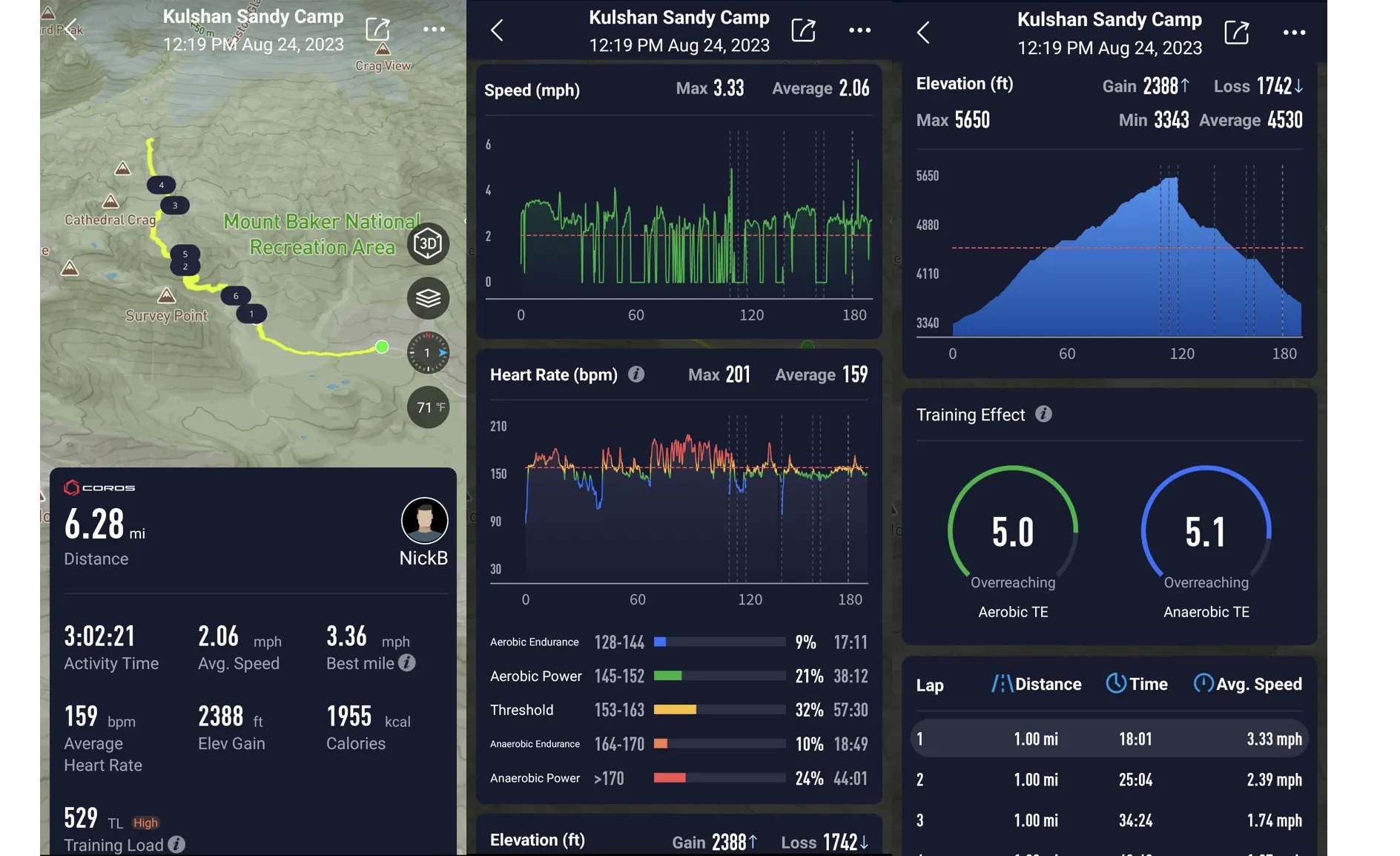



The Market Competition
Surveying the market, it’s easy to hone in on the Garmin Forerunner 265 ($450) as ripe competition for the Pace 3. But after adjusting the spectacles and tallying the numbers, a wider gap in abilities than expected opens up, with the Pace 3 surmounting watches that command a good bit more than the $229 you’ll need to trade for it.
First, the Pace 3 rightfully trounces the Forerunner 265 with a GPS battery life of 38 hours versus the 24 of the Garmin, and all at 10 g lighter and slightly larger display size. The Pace 3 also edges the Forerunner out in price, coming in $220 below the $450 you’ll need to fork over for the Garmin.
Even the Garmin Forerunner 255 ($350), which trades the AMOLED screen of the 265 for battery life, can’t quite take a proper swipe at it, as that watch only manages 30 hours of GPS battery life, has no touchscreen, and demands $120 more out of your pocket. Garmin watches, however, integrate much more fitness-related data synthesis. This is an area that COROS hasn’t been able to match quite yet.
In fact, the only real competition may be coming from inside the house. The COROS Apex 2 ($349) is an excellent watch in its own right, but it lacks the dual-frequency chip of the Pace 3 and Apex 2 Pro.
While the build of the Apex 2 is obviously of another caliber with titanium and sapphire glass, it’s not a huge cognitive jump to consider that the newcomer may cannibalize sales of the mid-tier Apex series.
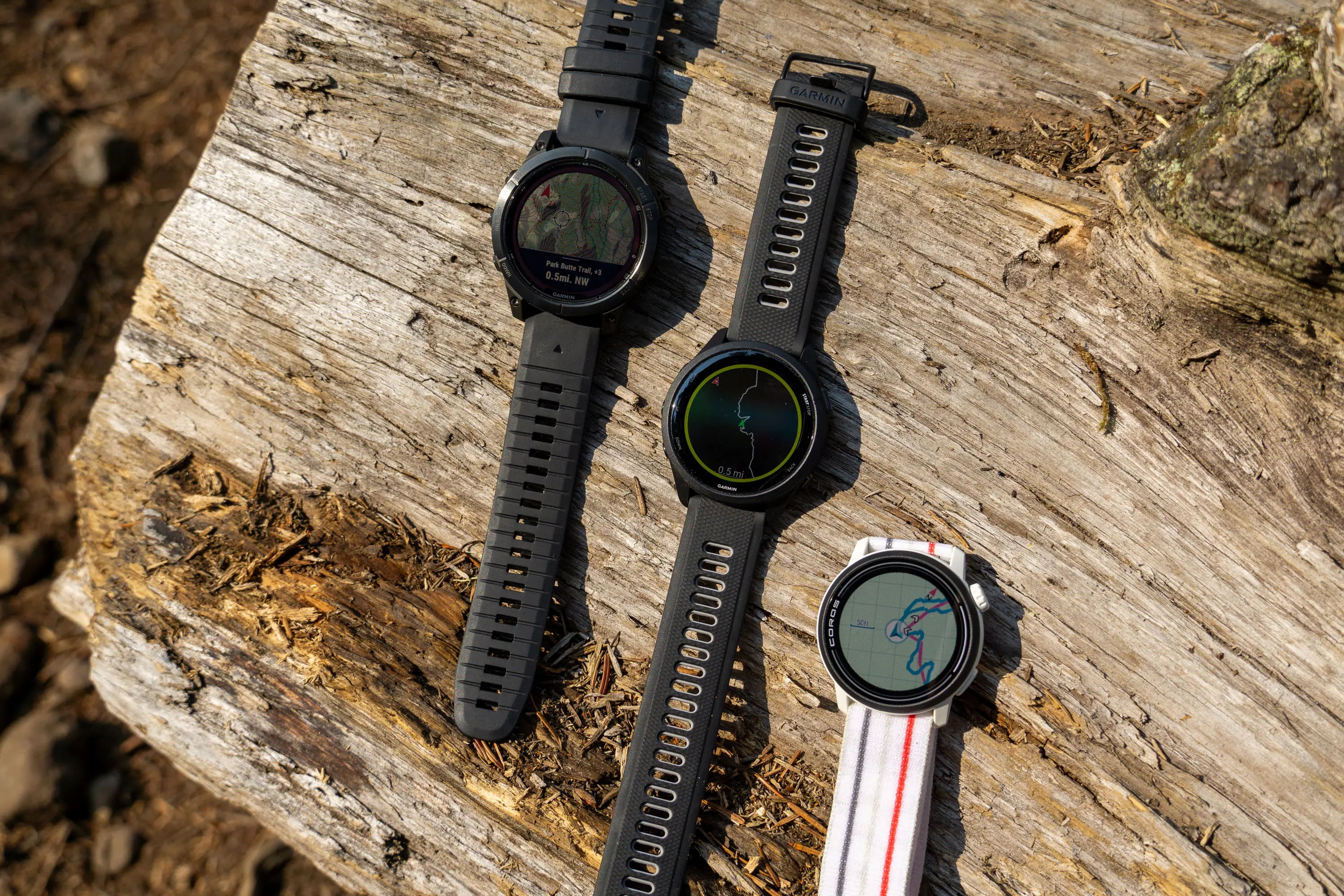



Where the Pace 3 Comes Up Short
Call me old-fashioned, but I’ve still got a soft spot for the certain astronaut allure of toting around a chunk of titanium on your wrist. The nylon and fiberglass composite of the Pace 3 is no space-age metal, but COROS did switch up the blend a bit, and the Pace 3 is a tougher unit for it.
I’ll also admit to having become spoiled by sapphire watch faces. It is one of my great joys producing my Apex 2 for inspection after having stuffed it into a granite hand crack. And, the mineral Corning glass on the Pace 3 will need to be treated with a bit more care to ensure that it doesn’t meet an untimely end.
And finally, in the race to the bottom when it comes to weight and size, the Pace 3 can feel a bit like a toy when lofted in the hand for the first time. Compared to flagship watches that command attention, the Pace 3 feels diminutive, which can either be a pro or a con, based on your preferences.
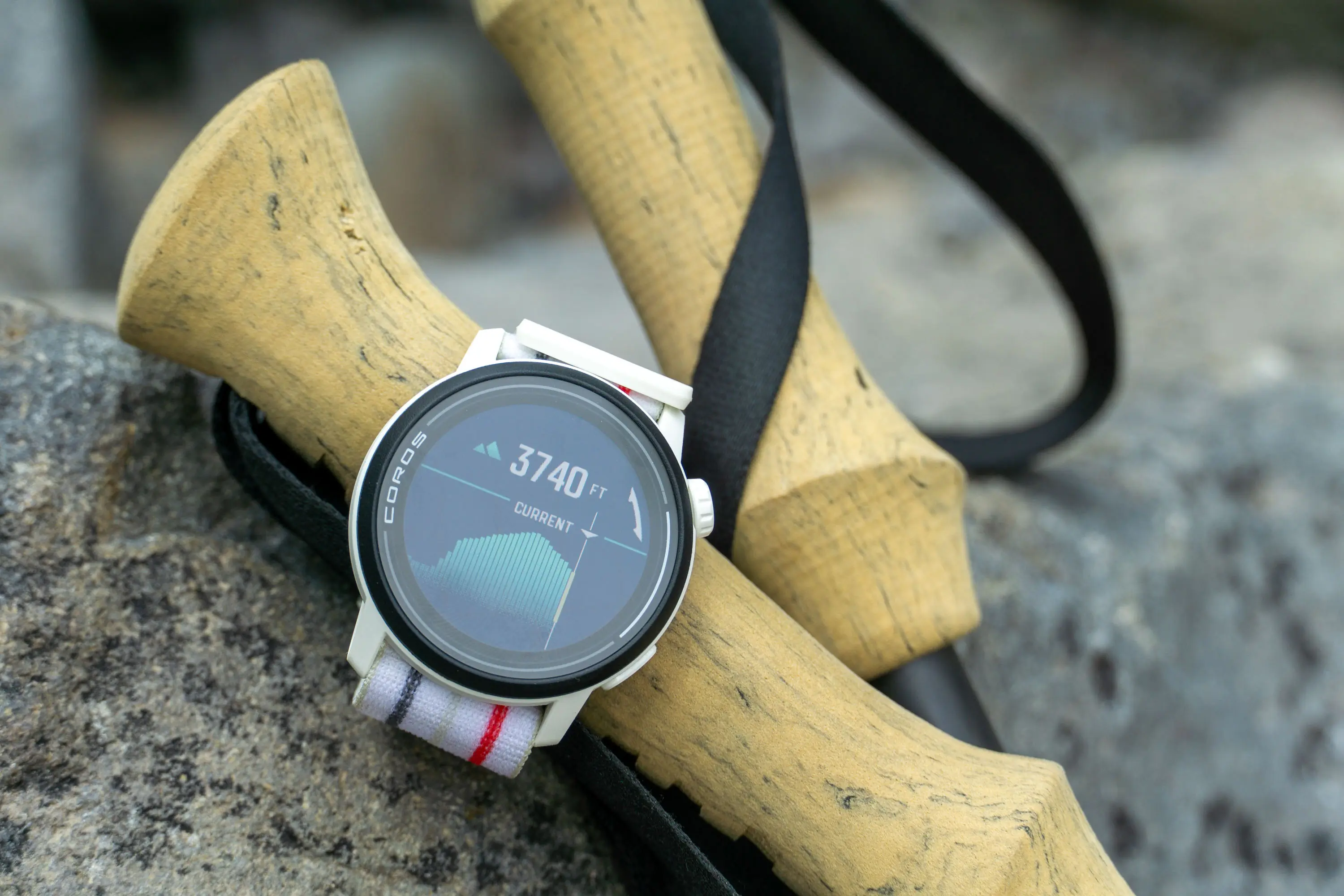



COROS Pace 3 Review: Who Is It For?
For $229, the Pace 3 rightfully has entry-level written all over it. But the title betrays the souped-up big block this unit has stuffed under the hood. With the feature set of watches multiple hundreds of dollars its senior, the Pace 3 lands as more of a wolf in sheep’s clothing.
The recently bulked-out activity profiles position the watch as a do-it-all machine, except for climbing and mountaineering (which both benefit from a higher-quality case and glass). It is equally at home on the track as it is ascending toward the snout of a glacier, and at a 38-hour GPS battery life, it has the juice to see it through.
With a newly added on-device music capability, touchscreen, and accurate heart rate monitor, the Pace 3 looks everything like a mid to high-tier watch that someone forgot to change the price on.
No, the screen doesn’t have the pop and glam of an AMOLED screen. And no, it isn’t framed in titanium and sapphire. But for someone who is looking for extreme value in a fitness watch, the Pace 3 is one of the best deals available at the moment.
The Pace 3 is now fully in my rotation, and I’ll continue to test it to gain a long-term impression of whether the budget build can stand up to the test of time. But after my first week of real use, the other watches on my shelves should worry. The COROS Pace 3 is a real heartbreaker.
